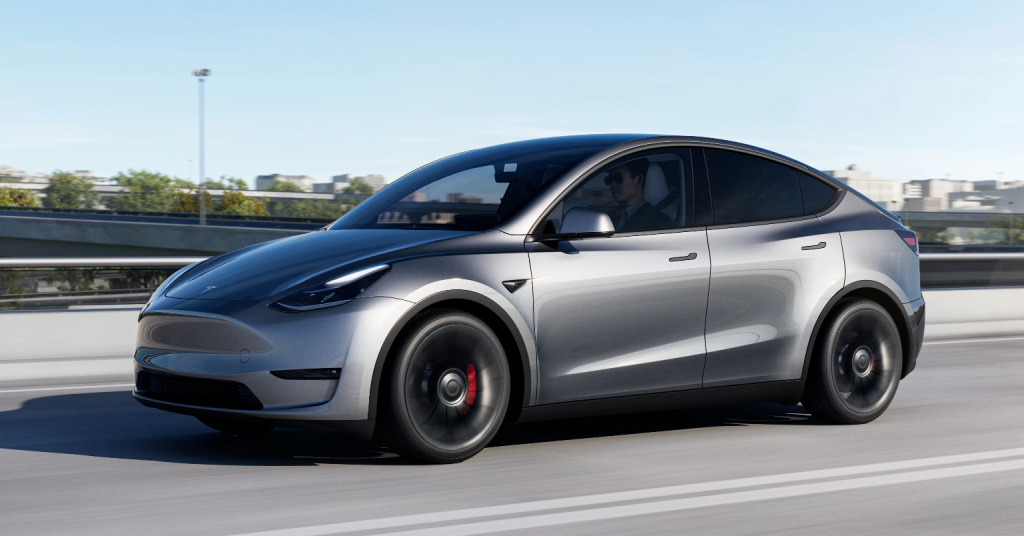Tesla has announced a hardware upgrade for its Model Y lineup in China, equipping the vehicles with the cutting-edge Hardware 4.0 (HW 4.0) self-driving computer. Despite the notable enhancements, the electric automaker has decided to maintain the same pricing for the Model Y, emphasizing its commitment to offering advanced technology without increasing costs for consumers.
The HW 4.0 upgrade brings substantial improvements to the Model Y’s autonomous capabilities. With a maximum detection range of 424 meters, the vehicle gains the ability to see farther distances. The upgraded self-driving computer boasts a remarkable five-fold increase in chip computing power, resulting in enhanced responsiveness and faster processing speeds.
China’s Model Y lineup includes three versions: the base rear-wheel-drive model, the dual-motor all-wheel-drive Model Y Long Range, and the dual-motor all-wheel-drive Model Y Performance. Despite the hardware upgrade, Tesla has decided not to alter the pricing for these variants.

Tesla China officially introduced the HW 4.0 upgrade on its Weibo account, emphasizing the improved visibility, clarity in perception, and faster processing speed offered by the advanced autonomous driving hardware.
In addition to the hardware upgrade, Tesla has unveiled a new color option for the upgraded Model Y in China – “Quicksilver.” This color, previously exclusive to Giga Berlin vehicles, is now available due to advanced paint shop technology.
Notably, Tesla had silently implemented Hardware 4.0 in Model S and Model X vehicles in the United States last year, with customers reporting enhanced processing power and improved Tesla Vision technology.
Looking forward, Tesla CEO Elon Musk hinted at ongoing developments with Hardware 5 during the Q4 and Full Year 2023 earnings call. Describing it as the third version of the Tesla-designed AI inference chip, Musk mentioned that Hardware 5 is currently in the design completion phase.
In terms of pricing, Tesla has recently reduced the starting prices of the Model Y entry edition and Model Y Long Range in China. The automaker is also offering cash discounts on select Model Y stock vehicles, providing customers with additional savings. Additionally, Tesla customers in China can avail themselves of a significant discount on paid paint for both Model 3 and Model Y vehicles.
Tesla’s Autopilot Evolution:
In October 2014, Tesla introduced pre-purchasable Autopilot, initially relying on hardware version 1 (HW1) developed in collaboration with Mobileye. The Mobileye partnership concluded in July 2016 due to safety concerns, prompting Tesla’s transition to independent hardware development. Cars produced after September 2014 were equipped with HW1, marking the beginning of Tesla’s Autopilot journey.
By October 2016, Tesla shifted to hardware version 2 (HW2) for new vehicles, collectively known as Autopilot 2.0. Despite its label, HW2 initially had fewer features than its predecessor. The term “Enhanced Autopilot (EA)” was introduced, featuring the notable “Navigate on Autopilot” capability unveiled in December 2016, allowing automated highway driving.
In early 2016, Tesla initiated the development of the Full Self-Driving (FSD) Computer, or Hardware 3 (HW3), which replaced the NVIDIA DRIVE PX 2 AI computing platform, significantly enhancing processing power.
The latest Hardware 4 (HW4) not only upgrades the FSD Computer but introduces a comprehensive sensor suite with enhanced cameras and radar. HW4 boasts a faster FSD Computer based on the Samsung Exynos architecture, additional high-resolution cameras, and a new radar named “Phoenix” for improved accuracy, setting the stage for a transformative advancement in Tesla’s autonomous driving technology.
With these continuous advancements and pricing adjustments, Tesla’s Shanghai factory, producing both the Model 3 and Model Y, remains at the forefront of electric vehicle manufacturing, solidifying its position as the largest Tesla factory globally.
Related:
- Elon Musk’s $56 Billion Tesla Pay Package That Surpasses Reserves of 100 Countries Central Banks Rejected by Court
- Nothing Phone (1) makes a cameo appearance in Tesla Cybertruck teaser
- Tesla announced its Cybertruck to soon arrive in Shanghai, Beijing, and 6 other cities in China
(via)







